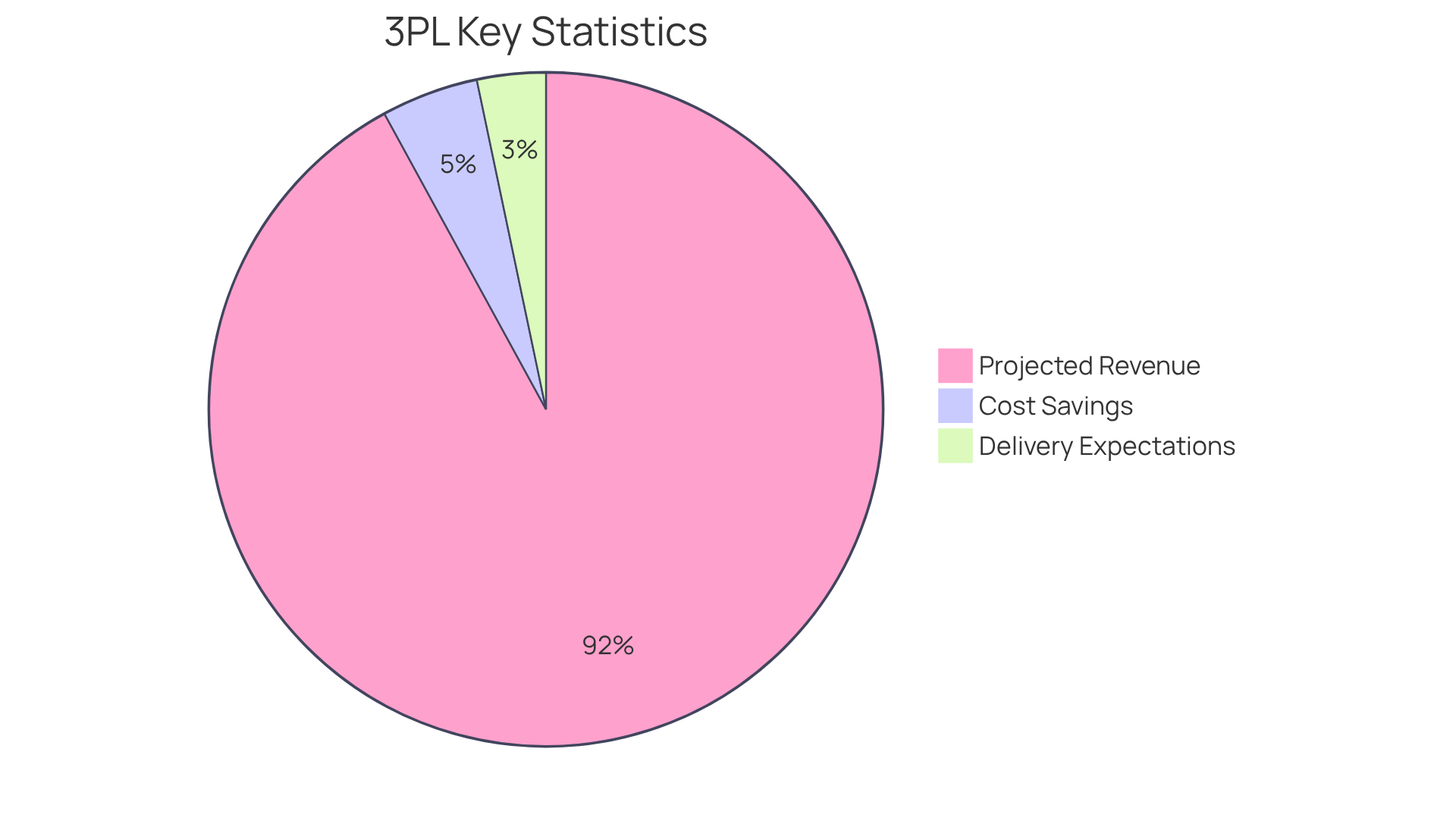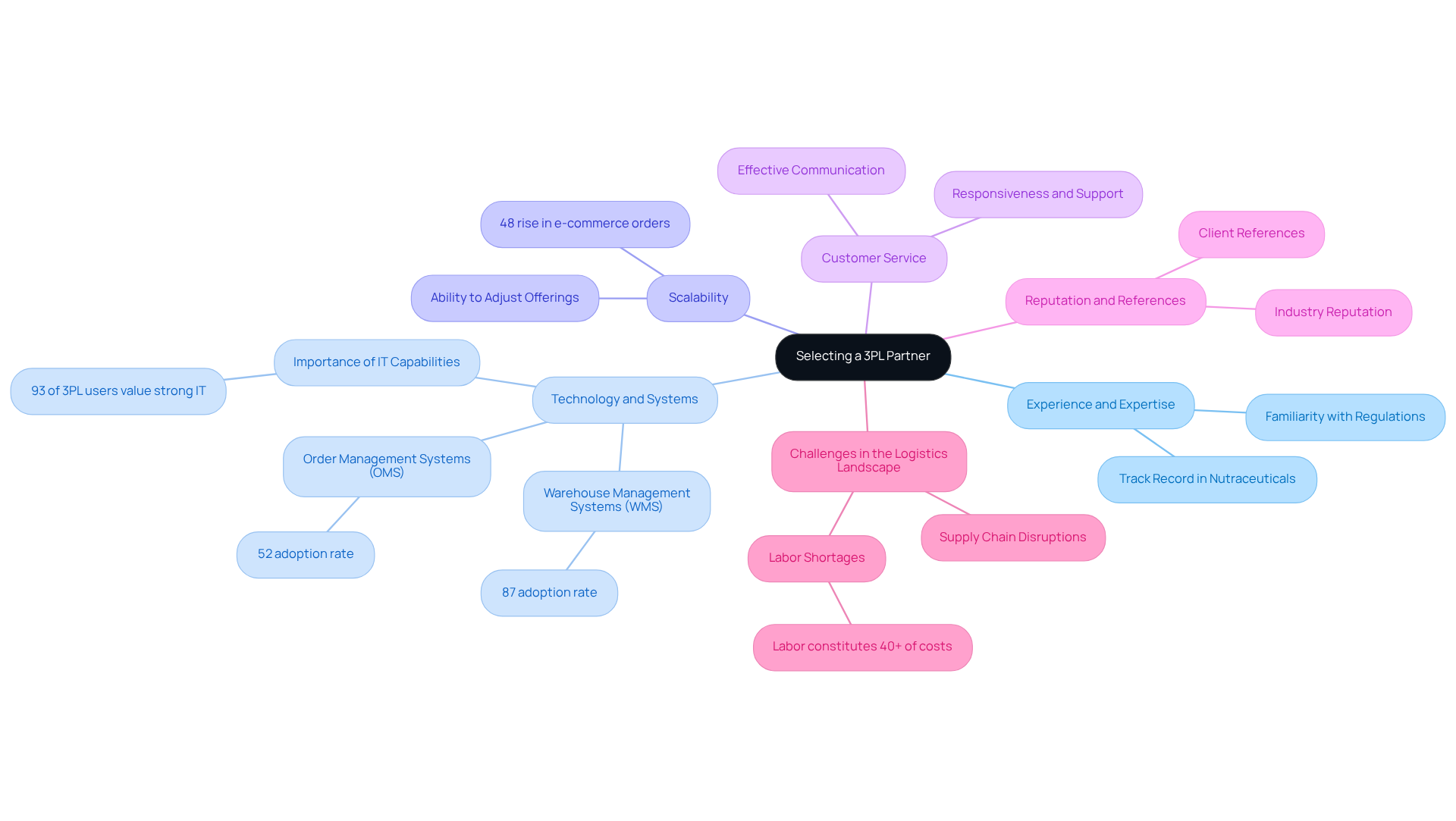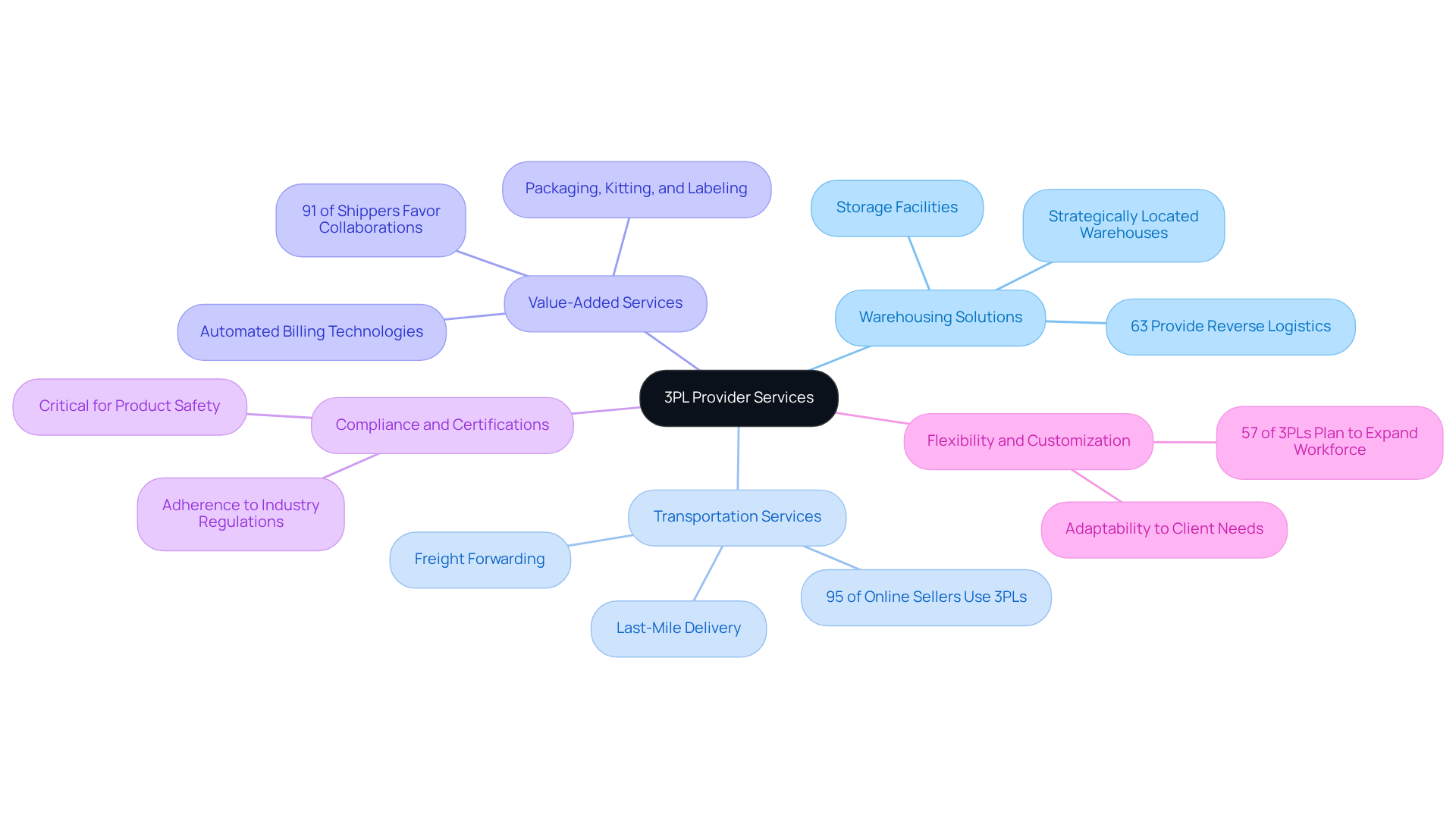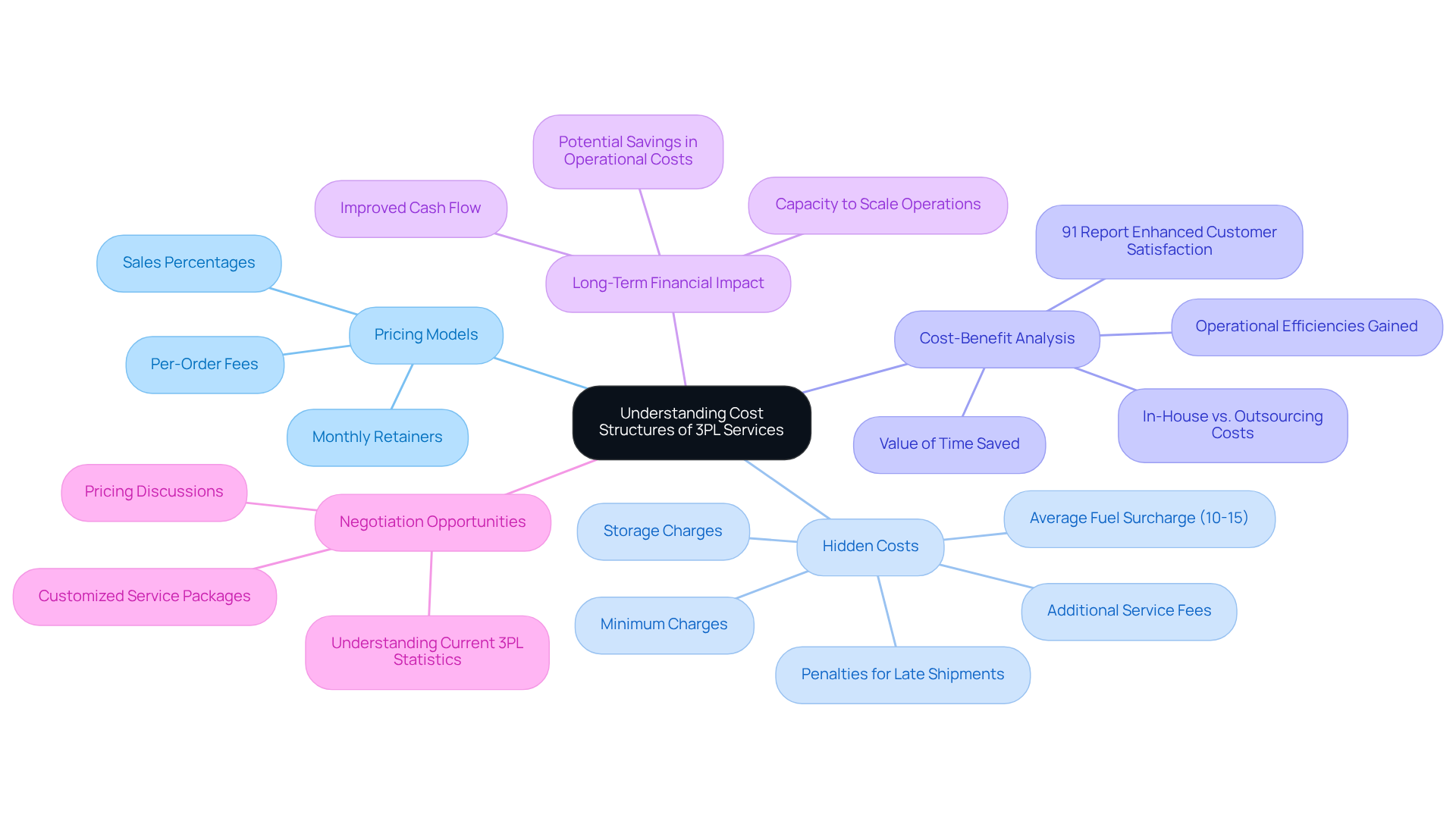Overview
To select the ideal third-party logistics (3PL) partner, companies must prioritize critical criteria:
- Experience
- Technology capabilities
- Scalability
- Customer service
- Reputation
By focusing on these elements, organizations can enhance their operational efficiency and adaptability—imperative in addressing the increasing demands of consumers and navigating the intricate landscape of supply chain management. This strategic choice not only positions businesses for success but also ensures they are equipped to meet evolving market challenges.
Introduction
Selecting the right third-party logistics (3PL) provider is pivotal for businesses navigating the complexities of today’s supply chain landscape. This choice has the potential to streamline operations, reduce costs, and elevate customer satisfaction, ultimately influencing a company's success. Yet, the journey of selecting a 3PL partner is not without its challenges.
How can businesses ensure they choose a provider that aligns with their unique needs and objectives? This guide delves into the essential steps and criteria for evaluating potential 3PL partners, equipping companies to make informed decisions that foster growth and operational efficiency.
Define Third-Party Logistics (3PL) and Its Importance
Third-party logistics (3PL) represents a strategic approach to outsourcing supply chain management tasks to specialized entities, encompassing essential functions such as warehousing, inventory control, transportation, and order processing. The significance of 3PL is underscored by its ability to streamline operations, reduce costs, and empower businesses to focus on their core competencies. By collaborating with a third-party provider, companies can enhance their distribution capabilities, elevate customer support, and leverage advanced supply chain technologies without incurring substantial capital investments.
Statistics reveal that:
- 75% of shippers experience cost savings in transportation through 3PL options, highlighting the economic advantages of outsourcing.
- The global 3PL sector is projected to achieve a revenue of approximately 1.48 trillion U.S. dollars, signaling its growing importance in the supply chain landscape.
- The worldwide supply chain market is anticipated to exceed 13.7 trillion U.S. dollars by 2027, underscoring the extensive growth and critical role of transportation services.
In the nutraceutical sector, forging successful partnerships with 3PL providers has proven essential for navigating intricate supply chains, ensuring compliance with regulatory standards, and addressing the escalating consumer demand for rapid delivery. As articulated by a Logistics CEO, "Selecting the appropriate 3PL partner provides you with distinct business benefits: Swiftly adjust your supply chain without significant investments."
The benefits of outsourcing supply chain management extend beyond mere cost reductions; they encompass enhanced operational efficiency and increased adaptability in responding to market fluctuations. As businesses contend with rising consumer expectations for expedited delivery—53% of 3PLs report that customers now anticipate deliveries in less than two days—leveraging a 3PL partner becomes increasingly crucial. This strategic collaboration not only optimizes supply chain processes but also positions companies to excel in a competitive marketplace.

Evaluate Key Criteria for Selecting a 3PL Partner
When selecting a third-party logistics (3PL) partner, several critical criteria should guide your decision-making process:
-
Experience and Expertise: Prioritize suppliers with a solid track record in the nutraceutical sector, particularly those skilled in handling products like powders, gummies, and soft gels. Their familiarity with industry-specific regulations and challenges can significantly impact your supply chain efficiency.
-
Technology and Systems: Assess the technology platforms utilized by potential partners for inventory management, order processing, and shipment tracking. Advanced systems, such as Warehouse Management Systems (WMS) and Order Management Systems (OMS), are essential for enhancing visibility and operational efficiency. In fact, 93% of 3PL users highlight the significance of strong IT capabilities in their supply chain partners. Additionally, with the global 3PL market expected to reach $1.7 trillion by 2025, leveraging the right technology is more crucial than ever.
-
Scalability: Ensure that the 3PL provider can adjust its offerings to accommodate your business growth and seasonal fluctuations. A versatile third-party logistics partner can help you manage heightened demand without sacrificing service quality. The recent 48% rise in e-commerce orders for 3PLs emphasizes the increasing need for flexible supply chain solutions.
-
Customer Service: Evaluate the responsiveness and support capabilities of the 3PL. Effective communication is crucial for successful logistics management, as it fosters collaboration and quick issue resolution.
-
Reputation and References: Investigate the provider's reputation within the industry and seek references from current or past clients. This feedback can provide valuable insights into their reliability and customer satisfaction levels.
-
Challenges in the Logistics Landscape: Be aware of the challenges faced by 3PLs, such as labor shortages, which can impact service delivery. Understanding these challenges can help you select a partner that is well-equipped to navigate them.
By concentrating on these standards, companies can make informed choices that improve their operational efficiency and ultimately promote growth. As HéIlio Albuquerque Lopes mentions, supply chain management involves making appropriate choices at the optimal moment, and effective collaborations frequently depend on a supplier's capability to utilize technology and expertise, guaranteeing that your transportation strategy corresponds with your business goals. For example, Western Packaging & Distribution illustrates how a thorough method to distribution can benefit companies by streamlining the supply chain and enhancing operational efficiency.

Assess Capabilities and Services of Potential 3PL Providers
To effectively assess the capabilities of potential third-party logistics (3PL) providers, consider the following key services:
-
Warehousing Solutions: Examine their storage facilities, focusing on location, capacity, and the technology employed for inventory management. Effective warehousing is essential, as 63% of 3PLs provide reverse logistics solutions, which are important for handling returns and lifecycle in e-commerce. Additionally, having multiple strategically located warehouses significantly reduces delivery times and costs, offering a competitive advantage in serving widespread markets.
-
Transportation Services: Understand their transportation network and options, including freight forwarding, last-mile delivery, and international shipping capabilities. With more than 95% of online sellers employing 3PL providers, a strong transportation system is crucial for ensuring customer satisfaction and fulfilling swift delivery expectations.
-
Value-Added Services: Look for additional offerings such as packaging, kitting, and labeling that can enhance your product appeal. These offerings can greatly enhance operational efficiency and customer satisfaction, as 91% of shippers indicate favorable collaborations with 3PLs. Investing in automated billing and invoicing technologies is also essential for 3PLs to streamline operations and reduce errors, further improving delivery.
-
Compliance and Certifications: Ensure the provider adheres to industry regulations and possesses necessary certifications, particularly important in sectors like nutraceuticals, where compliance is critical for product safety and market access.
-
Flexibility and Customization: Evaluate their capability to adjust offerings to satisfy your particular requirements. This adaptability can provide a significant competitive edge, especially as 57% of 3PLs plan to expand their workforce to better serve diverse client requirements. Significantly, 60% of companies noted increasing labor expenses, emphasizing the difficulties encountered by 3PLs in upholding quality.
By thoroughly evaluating these aspects, businesses can select a 3PL partner that not only meets their logistical needs but also enhances their overall operational effectiveness.

Understand Cost Structures and Financial Implications of 3PL Services
When evaluating the cost structures of 3PL services, several critical factors warrant careful consideration:
-
Pricing Models: It is essential to familiarize yourself with the various pricing models employed by 3PL providers. Common structures include per-order fees, monthly retainers, and sales percentages, each influencing your total operational expenses in distinct ways.
-
Hidden Costs: Vigilance is necessary regarding potential hidden costs that may arise in 3PL agreements. These can encompass fees for additional services, storage charges, and penalties for late shipments, all of which can significantly impact your budget if not anticipated. Notably, the average fuel surcharge can range from 10-15% of the shipping label cost, and minimum charges typically apply to every shipment, covering fundamental operational costs.
-
Cost-Benefit Analysis: Conducting a thorough cost-benefit evaluation is crucial to compare the expenses associated with in-house operations against those of outsourcing to a third party logistics partner. This analysis should consider not only direct costs but also the value of time saved and operational efficiencies gained. Industry insights reveal that 91% of 3PL users report enhanced customer satisfaction, underscoring the advantages of efficient supply chain partnerships.
-
Long-Term Financial Impact: Assessing the long-term financial implications of partnering with a 3PL is vital. This evaluation includes potential savings in operational costs, improved cash flow, and the capacity to scale your logistics operations without substantial investments.
-
Negotiation Opportunities: Exploring prospects for negotiation regarding pricing and agreement terms can yield significant benefits. Many 3PL providers are amenable to discussions that can result in better rates or customized service packages, ensuring you receive optimal value for your investment. As logistics experts note, understanding the current 3PL statistics and numbers is critical for businesses making logistics decisions in 2025.
By grasping these elements, businesses can navigate the complexities of 3PL partnerships more effectively, ultimately leading to enhanced operational efficiency and cost savings.

Conclusion
Selecting the right third-party logistics (3PL) partner is a pivotal decision that can significantly influence a company's supply chain efficiency and overall success. Understanding the strategic importance of 3PL enables businesses to leverage specialized services, streamline operations, reduce costs, and enhance customer satisfaction. This partnership allows companies to focus on their core competencies while benefiting from advanced logistics capabilities that would be costly to develop in-house.
Key criteria for evaluating potential 3PL partners include:
- Experience
- Technology
- Scalability
- Customer service
- Reputation
It is essential to assess the capabilities and services offered by 3PL providers, including:
- Warehousing solutions
- Transportation services
- Compliance with industry regulations
Furthermore, understanding the cost structures and financial implications of 3PL services is critical for making informed decisions that align with business goals.
In a rapidly evolving logistics landscape, the choice of a 3PL partner can determine a company's ability to adapt to market demands and consumer expectations. As businesses navigate the complexities of supply chain management, prioritizing the selection of a reliable and capable 3PL provider becomes essential. Companies are encouraged to conduct thorough evaluations and engage in meaningful discussions to ensure that their logistics strategies effectively support their growth and operational efficiency. By taking these steps, organizations can position themselves for success in an increasingly competitive environment.
Frequently Asked Questions
What is third-party logistics (3PL)?
Third-party logistics (3PL) is a strategic approach to outsourcing supply chain management tasks to specialized entities, which includes functions such as warehousing, inventory control, transportation, and order processing.
Why is 3PL important for businesses?
3PL is important because it streamlines operations, reduces costs, and allows businesses to focus on their core competencies. It enhances distribution capabilities, improves customer support, and provides access to advanced supply chain technologies without significant capital investments.
What are some statistics highlighting the benefits of 3PL?
Statistics show that 75% of shippers experience cost savings in transportation through 3PL options. Additionally, the global 3PL sector is projected to achieve approximately 1.48 trillion U.S. dollars in revenue, and the worldwide supply chain market is expected to exceed 13.7 trillion U.S. dollars by 2027.
How does 3PL benefit the nutraceutical sector?
In the nutraceutical sector, partnerships with 3PL providers are essential for navigating complex supply chains, ensuring compliance with regulatory standards, and meeting the growing consumer demand for rapid delivery.
What are the advantages of selecting the right 3PL partner?
Choosing the appropriate 3PL partner allows businesses to adjust their supply chains quickly without significant investments, leading to distinct business benefits such as enhanced operational efficiency and increased adaptability to market fluctuations.
How do consumer expectations impact the need for 3PL?
Rising consumer expectations for expedited delivery, with 53% of 3PLs reporting that customers now expect deliveries in less than two days, make leveraging a 3PL partner increasingly crucial for businesses to optimize their supply chain processes and remain competitive.




